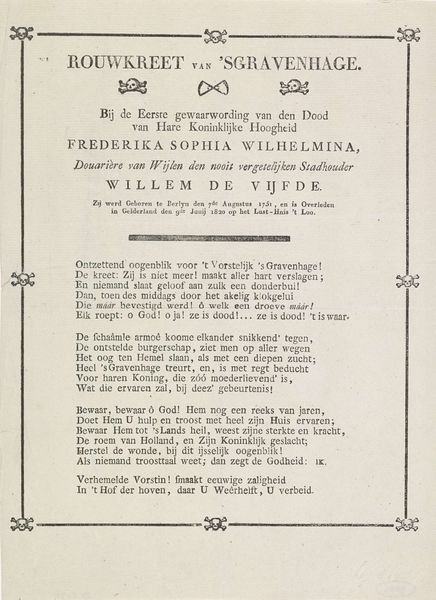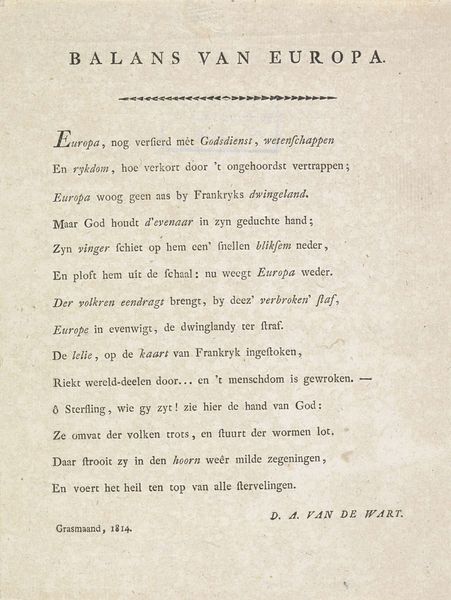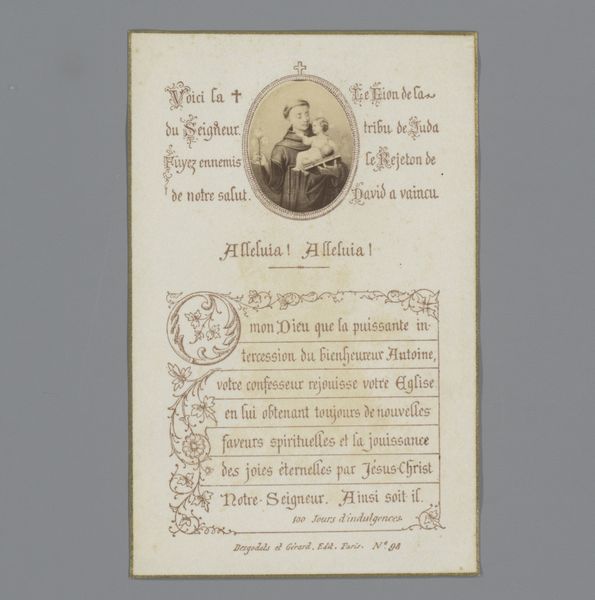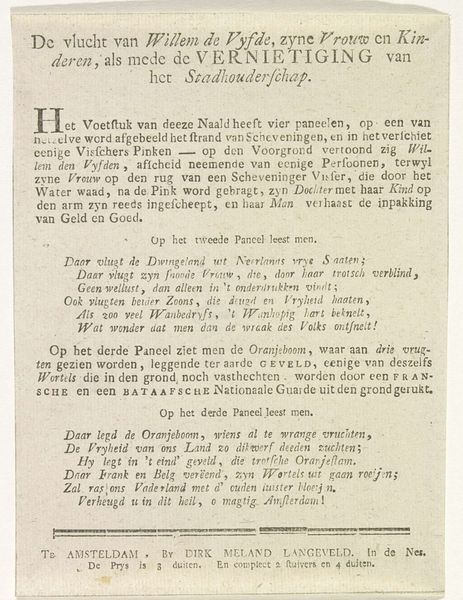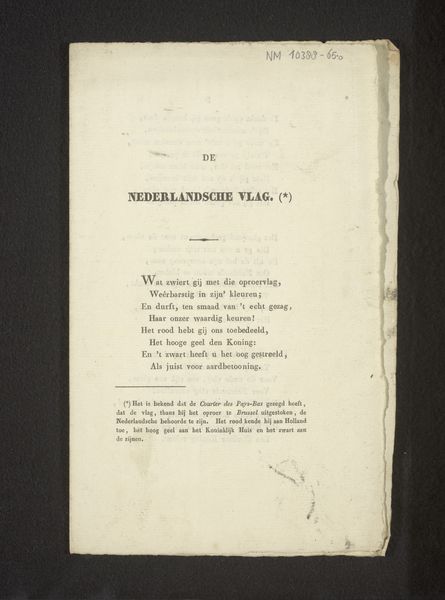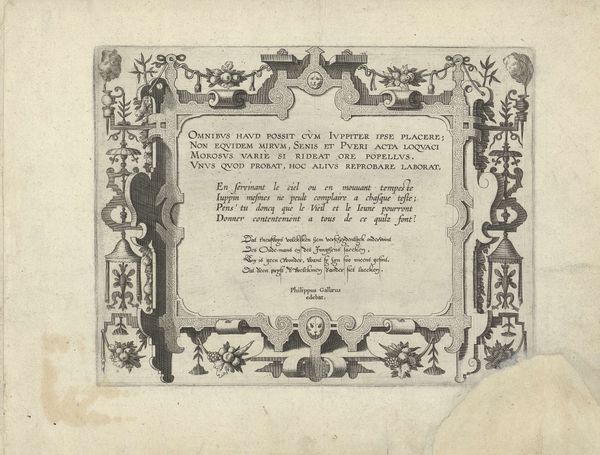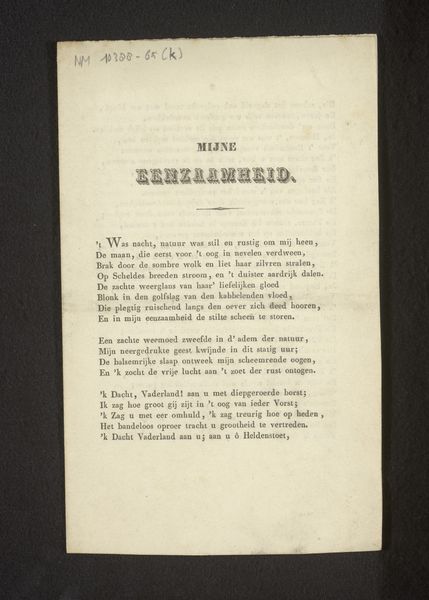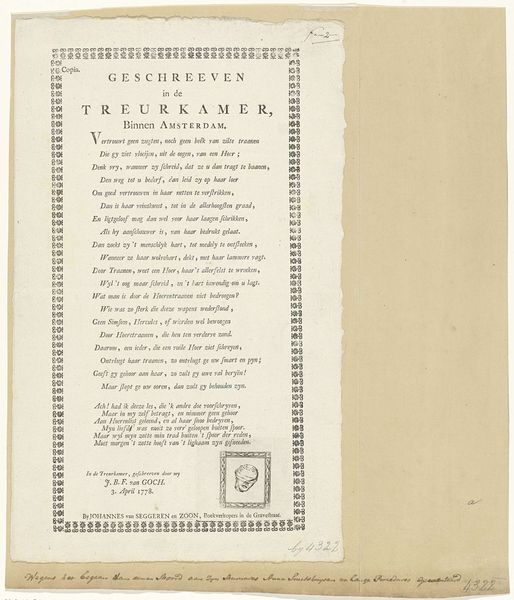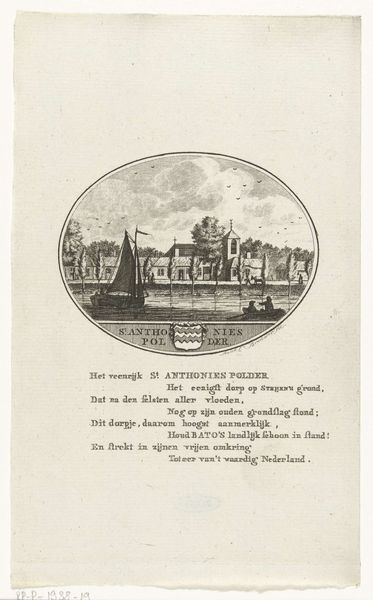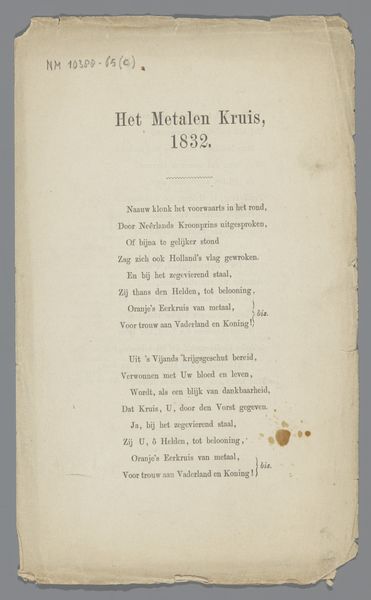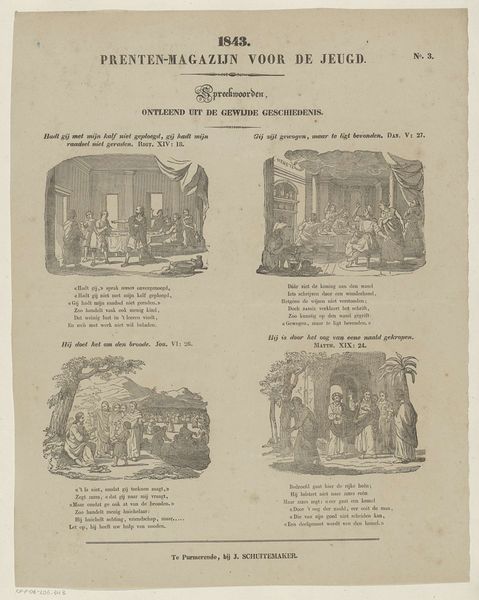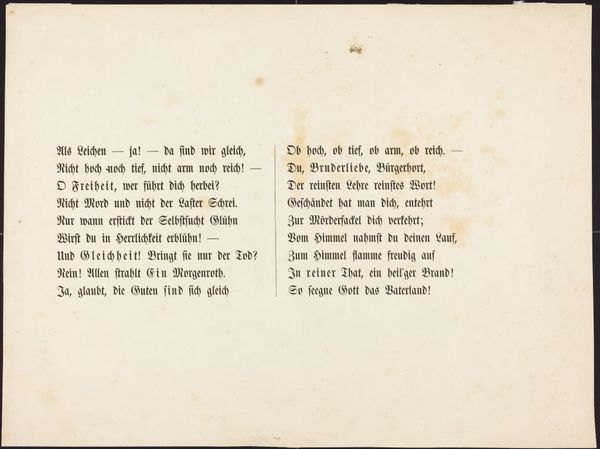
print, textile, paper, typography
textile
paper
typography
romanticism
Dimensions height 20.5 cm, width 12.1 cm
Curator: This is "Het lied van Chassé," a song sheet dating back to possibly 1831, created by Christianus Petrus Eliza Robidé van der Aa. Editor: My initial feeling is of fragile patriotism. The aged paper itself seems to whisper a longing for past glory, a physical embodiment of fading pride. Curator: Indeed. Its creation and distribution align with a specific political context. General Chassé was seen as a hero by some after the Ten Days’ Campaign. Editor: Absolutely. Considering this was a printed multiple—likely quite accessible—I wonder about the paper stock itself. Was it cheap, quickly produced, meant for ephemeral use, and thus reflecting the complexities of rapidly mobilizing popular support? Curator: An astute observation. Its purpose was arguably less about archival value and more about immediate political resonance. Think of it as early political propaganda distributed among specific social echelons. The romantic script contributes too. Editor: Precisely, the materiality informs the message. This isn't merely a song; it's a carefully manufactured object intended to cultivate and manipulate public sentiment through broad circulation. I’m wondering what was actually sung, considering the layout on paper: did it dictate who sung, or were those cues used to generate a sing-along amongst larger crowds? Curator: Interesting questions about production! And consider, also, how the performance of this song in public spaces contributes to the formation of collective memory and national identity. The romanticism is less an artistic style and more a social engineering method. Editor: Agreed, the intersection of material culture and social-political motivation reveals a fascinating dynamic— it really calls into question the sincerity of popular fervor! Curator: A fittingly nuanced conclusion for a piece like this. The “Song of Chassé,” isn't just a tune; it's a historical artifact of contested nationalism. Editor: Right, it is a useful lens to investigate not only artmaking, but also its socio-economic realities of production.
Comments
No comments
Be the first to comment and join the conversation on the ultimate creative platform.
